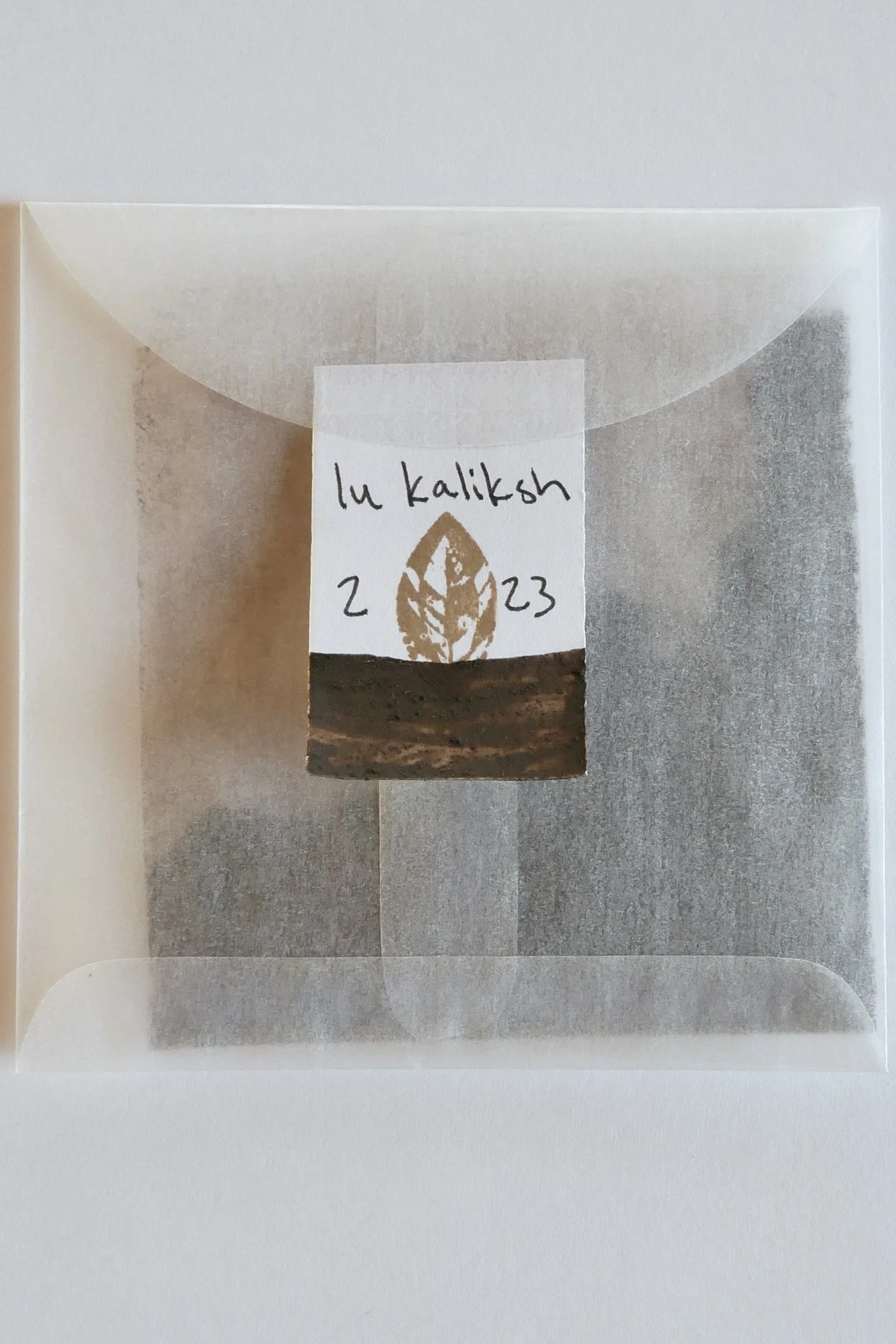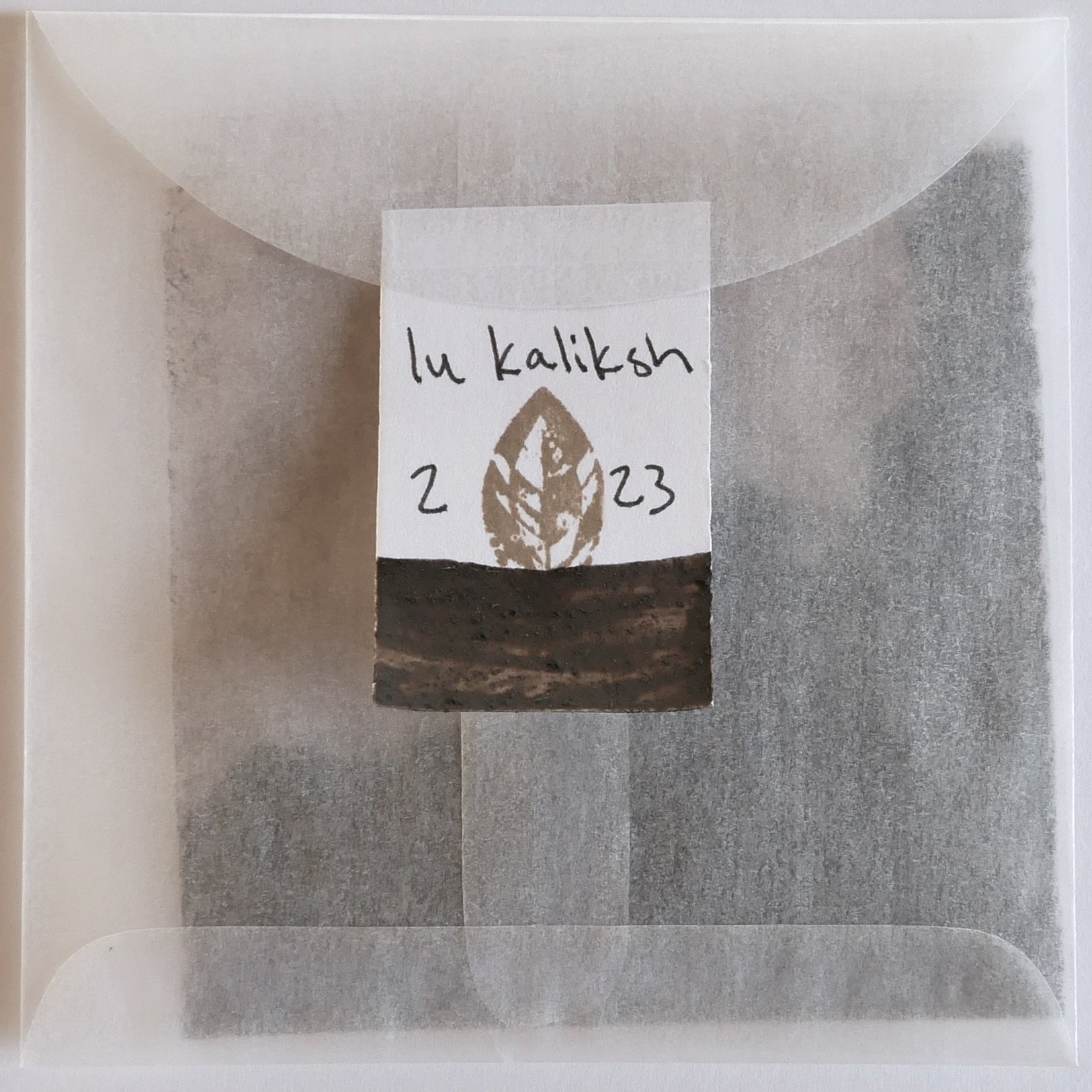lu kaliksh : february ’23
'Lu kaliksh' is wetland soil from Rockefeller Wildlife Refuge in Grand Chenier, which is in southwest Louisiana on Atakapa-Ishak land. The soil was collected by Ashely Booth, a Louisiana-based soil scientist, and then donated to Bird for her studio practice. Ashley sampled the soil from various depths to research the effectiveness of wetland conservation strategies. Due to a variety of factors stemming from colonization, the coast of Louisiana has lost over 1,900 square miles of land (the size of Delaware) in the last 100 years and is still losing a football field of land every hour.
Jeffery U. Darensbourg collaborated with Heather Bird Harris to name this month’s pigment. Jeffery is a writer, researcher, and artist of many genres who lives in Bulbancha, the places colonists attempted to rename as "New Orleans." He is a Louisiana Creole and an enrolled member of the Atakapa-Ishak Nation of Indians. His work focuses on Indigenous contributions to Louisiana culture and the experiences of mixed-ethnicity people. One of Jeffery’s areas of focus is language renewal, and as part of a collaboration with Bird, he gave this pigment its name: ‘Lu Kaliksh.’ Lu Kaliksh means both “dirt crushed by hand” and “dirt was worn out” — a fitting name for this pigment, I think, on many levels.
Lu Kaliksh is prized by contributor Heather Bird Harris for its fine particle size and ability to fan out and form rivulets when added to moistened watercolor paper, echoing the patterns made by the water flow in the wetlands where the soil originates. See activity.
contributor: Heather Bird Harris
Heather Bird Harris is an artist, educator, and activist working in Atlanta, GA and New Orleans, LA. Her work explores the through lines between land history and environmental crises, as well as mothering, in the face of climate change. Bird's practice includes painting and social practice, which engage site-specific earth pigments as catalysts for connection to historical narratives, environmental risks, and collective action. Her work was recently featured nationally on NPR and locally in New Orleans and Baton Rouge. www.heatherbirdharris.com @heatherbirdharris
Image from Heather Bird Harris’ website.
Image from the Atakapa-Ishak Nation website.
22% donation recipient : Atakapa Ishak Nation
The Atakapan people are a Southeastern culture of Native American tribes who spoke Atakapa and historically lived along the Gulf of Mexico. They called themselves the Ishak, pronounced "ee-SHAK", which translates as "The People" and further designated themselves within the tribe as "The Sunrise People" and "The Sunset People". Descendants still live in Louisiana and Texas. In 2006 the Atakapa-Ishak met as one nation. www.atakapa-ishak.org





